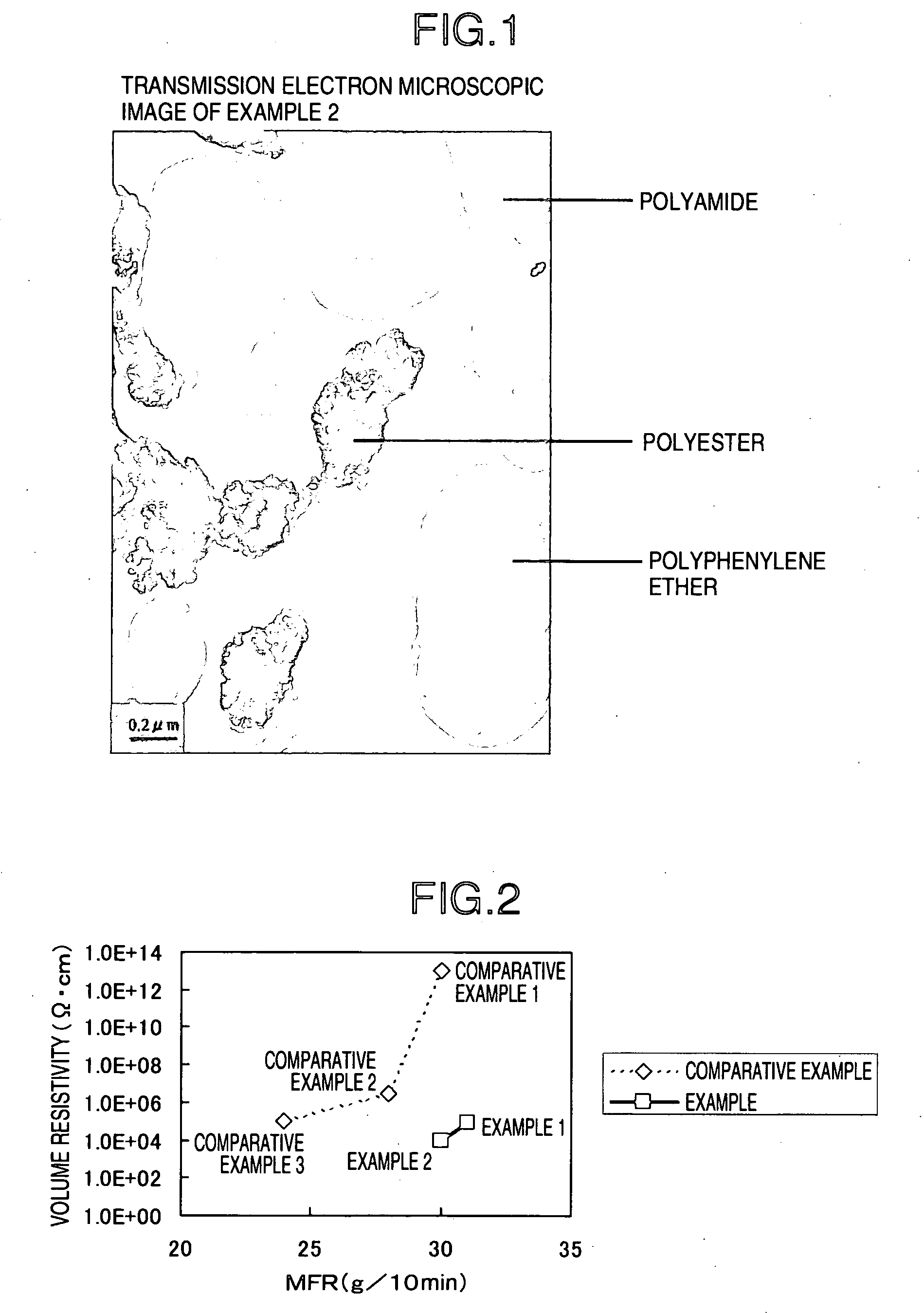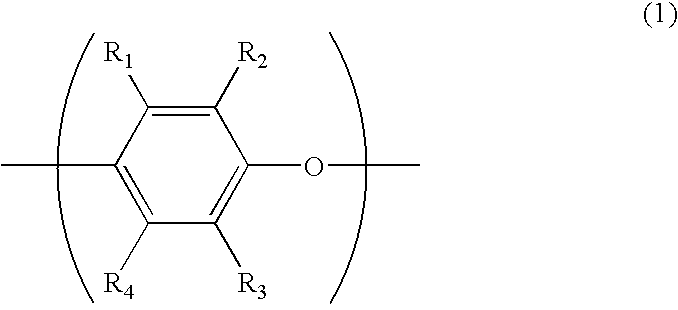Conductive Resin Composition
a technology of conductive resin and composition, which is applied in the direction of non-metal conductors, conductors, transportation and packaging, etc., can solve the problems of poor molding processability of polyphenylene ethers, deterioration of fluidity, and need for further improvement of fluidity, etc., to achieve excellent fluidity and surface luster, excellent conductivity, and low water absorption.
- Summary
- Abstract
- Description
- Claims
- Application Information
AI Technical Summary
Benefits of technology
Problems solved by technology
Method used
Image
Examples
examples
[0155] The invention is illustrated below in further detail with working examples and comparative examples but the invention is not limited by the description given in the working examples.
(Starting Materials Used)
(1) Polyamide 6,6 (hereinafter abbreviated as PA66)
[0156] Leona 1200-011, a trade name, mfd. by Asahi Kasei Chemicals Corporation
(2) Poly(ethylene terephthalate)s (hereinafter abbreviated as PET)
(2-1) NEH-2050, a trade name, mfd. by UNITICA LTD. (this polymer is hereinafter abbreviated as PET-1)
[0157] Intrinsic viscosity: IV=0.78 (measured at 20° C. and a concentration of 0.5 g / 100 ml in a solution in a phenol / tetrachloroethane (6 / 4 by mass) mixture)
(2-2) MA-1340P, a trade name, mfd. by UNITICA LTD. (this polymer is hereinafter abbreviated as PET-2)
[0158] Intrinsic viscosity: IV=0.57 (measured at 20° C. and a concentration of 0.5 g / 100 ml in a solution in a phenol / tetrachloroethane (6 / 4 by mass) mixture)
(2-3) MA-2101M, a trade name, mfd. by UNITICA LTD. (thi...
example 4
[0182] Using the same twin-screw extruder as in Example 1, PPE, a hydrogenated block copolymer and maleic anhydride were fed through the upstream-side feed opening in the proportions described in Table 1 and melt-kneaded at a preset temperature in a region from the upstream-side feed opening to a place just before the downstream-side feed opening of 320° C., a preset temperature in a region from the downstream-side feed opening to a die of 280° C., a screw speed of 300 rpm and a discharge rate of 15 kg / h, and then PA66, PET and PA / CNT-MB were fed through the downstream-side feed opening in the proportions described in Table 1 to produce resin composition pellets. The fluidity (MFR), volume resistivity, surface luster, water absorption properties and Izod impact strength of the resin composition obtained were evaluated. The values of the physical properties are described in Table 1 together with the recipe.
examples 5 to 8
[0183] Resin composition pellets were produced in the same manner as in Example 1 except for changing the recipe as described in Table 2. The fluidity (MFR), volume resistivity, surface luster, water absorption properties and Izod impact strength of the resin compositions thus obtained were evaluated. The values of the physical properties are described in Table 2 together with the changed recipes.
PUM
| Property | Measurement | Unit |
|---|---|---|
| diameter | aaaaa | aaaaa |
| impact strength | aaaaa | aaaaa |
| volume resistivity | aaaaa | aaaaa |
Abstract
Description
Claims
Application Information
 Login to View More
Login to View More - R&D
- Intellectual Property
- Life Sciences
- Materials
- Tech Scout
- Unparalleled Data Quality
- Higher Quality Content
- 60% Fewer Hallucinations
Browse by: Latest US Patents, China's latest patents, Technical Efficacy Thesaurus, Application Domain, Technology Topic, Popular Technical Reports.
© 2025 PatSnap. All rights reserved.Legal|Privacy policy|Modern Slavery Act Transparency Statement|Sitemap|About US| Contact US: help@patsnap.com


